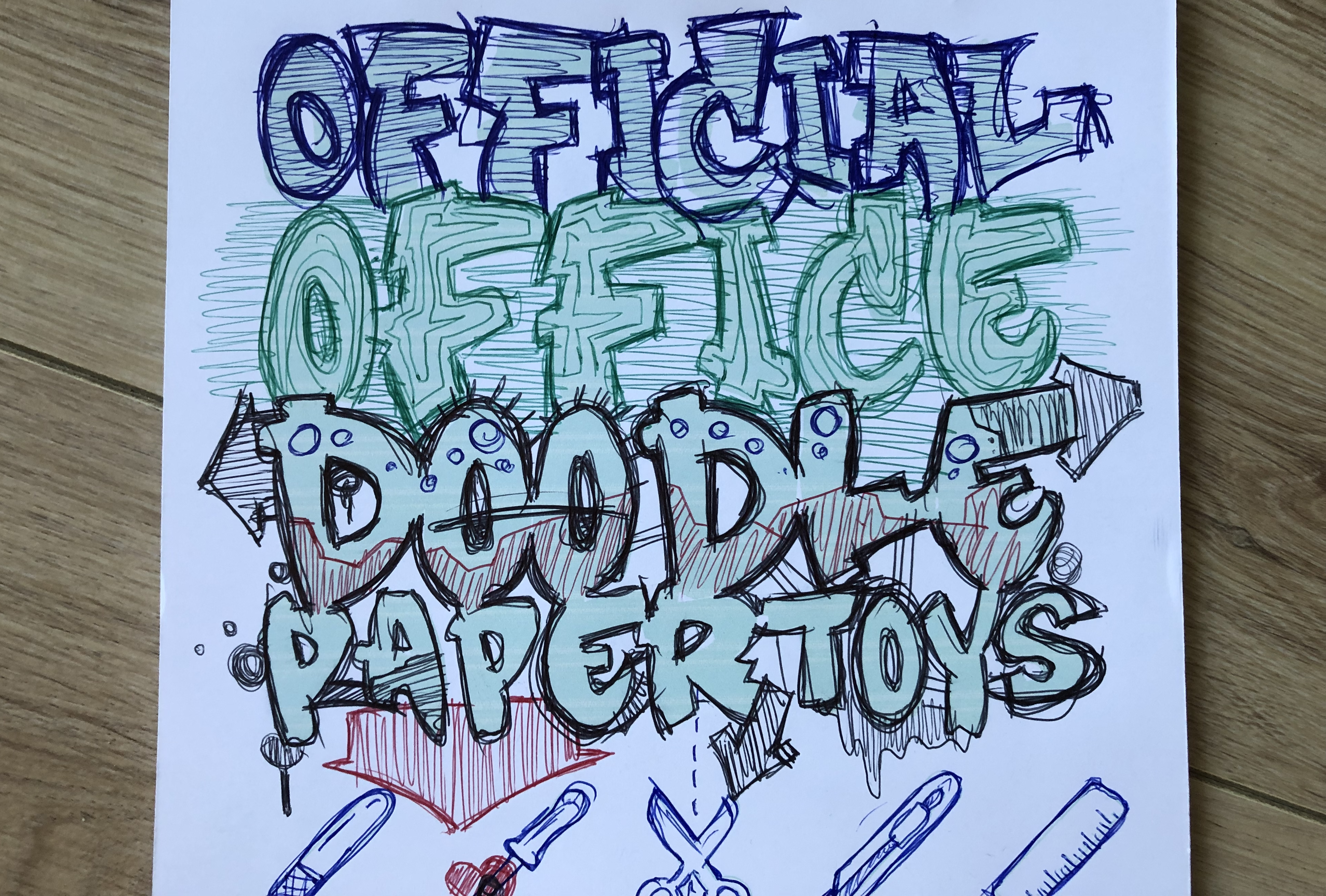This is an APE-project!
Read more about the APE-method
Doodle papertoy book

A "doodle sketchbook", what is that?
So a better first question would be: What is doodling?
Doodling: scribble absent-mindedly.
or
Doodling: a rough drawing made absent-mindedly.
Traditionally, we have thought of these doodles as a sign of distraction — an indication that your mind was not where it was supposed to be.
The British coined the term "Yankee doodle" to mean American fools. It was from here that the term doodle became associated with absentmindedness and foolishness.
Yet, recent research has shown that doodling is not an enemy of attention; it may in fact be a friend.
Doodling for improved concentration

And an improvement in your lifestyle!
The P of APE stands for Play, which is the main focus of this project.
My vision on play is very simple: play is good, play is healthy, play has (scientific) benefits:
- Relieve stress
- Improve brain function
- Stimulate the mind and boost creativity
- Improve relationships and your connection to others
- Keep you feeling young and energetic
So if that is true, how do we get people to start playing again?
It's scientifically proven that doodling improves concentration and helps to remember "boring" information. So why isn't everybody doodling during a conference call or a meeting?
One reason is mentioned earlier: we associated doodling with absentmindedness and foolishness. But an other reason is that we forgot as adults how to play...
“We don’t stop playing because we grow old; we grow old because we stop playing.” - George Bernard Shaw
Play
There are a couple reasons why adults stop playing, this process is basically the same for most adults...
- grown ups think that "play" is for children
- hobbies is something that your parents had (knitting, trains, stamps)
- prefab toys don't help you imagination
- time is precious, we rather spend it zoned-out in front of the TV/computer/phone
- our society tends to dismiss play for adults
- play is perceived as unproductive, petty or even a guilty pleasure
- the notion is that once we reach adulthood, its time to get serious
- between personal and professional responsibilities, there’s no time to play
I mention before there are a lot of benefits for playing. And I haven't even mentioned all the benefits from doodling!
Here are four scientifically verified benefits of doodling:
- Doodling increases creativity
- Doodlers have better memory
- Doodling improves your focus and concentration
- Doodling helps you see the big picture
Papertoys

So what about papertoys? Well, glad you ask asked! I'm kind of an expert about this subject. I'm featured in a couple of papertoys book. I've done a couple of exhibits.
Papertoys are essentially 3-D models printed out on paper.
Most of hobbies you need an investment in tools or equipment. Take brewing beer or knitting for example. You can't start without going to an art-store or order online.
That's why papertoy are a great to start with, all you need are simple office supplies:
- printer / papertoy-template
- art supplies like: pencils / markers / paint / etc
- scissor / x-acto knife
- glue
- time (probably the most scarce object on this list)
I've written "art-supplies" but you could just start doodling with a blue BIG pen.
Most common excuses is not having the equipment, or the price of that equipment. With papertoys you probably have them already laying around the office or at home!
Low threshold
The start of a new hobby can be intimidating for all the new stuff you have to learn. Most hobbies you need a manual. With papertoys we start with the simples shape to makes sure nobody is intimidate by it: the cube.
And we could even add a pattern to it, so it will be like the coloring book for adults
Simple instruction
Focus your play on the actual experience, not on accomplishing any goal. Print out the paper-template, and start doodling.
Once people start doodling and building, I hope the IKEA effect will trigger a sense of accomplishment and pride.
The IKEA effect is a cognitive bias in which consumers place a disproportionately high value on products they partially created. The name derives from the Swedish manufacturer and furniture retailer IKEA, which sells many furniture products that require assembly.
I am not making this up!

Here some articles about this subject:
- The 4 benefits of doodling
- doodle-your-way-improved-focus-and-concentration
- the-thinking-benefits-of-doodling
I still have the feeling you're not believing me. Don't trust me. Here some scientific proof for you to read (but it's all up to you)!
Research aka scientific research about doodling:
Progress Project
I've done a trial run. Everybody present during the experiment enjoyed the experience. I'm not 100% sure if it increased their memory or concentration.
It was during one of my presentation... and I give awesome presentations!
But at the end of the meeting we had a lot of papertoys in the office.
Bigger problem is the execution of the design. I am talking about doodling. But currently I have a digital (computer) cover design and page design.
I guess I should do everything by hand.....
But what to do about the E(ngeneering) part of APE?
I used my creative coding library to generate the basic papertoy in .svg. I use these files in Illustrator to design the template pages.